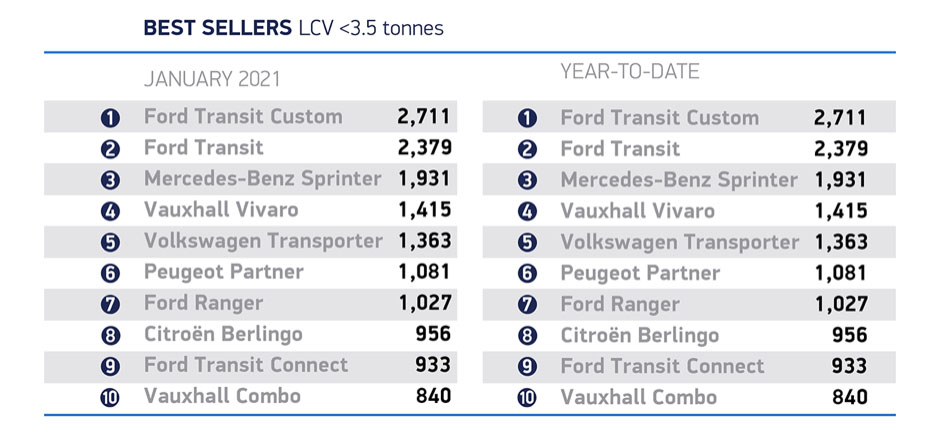2021 began well for the LCV market as January saw new van registrations rise by two per cent on last year to 24,029, figures out today (Jan 4) from the SMMT show.
It was the highest-volume January since 1990, when 24,094 sales were recorded, and was also 10.5 per cent ahead of the 21,747 average for January 2016 to 2020.
But despite expected growth of the latest, low-emission LCVs in 2021, the SMMT’s latest market outlook has been downgraded because of ‘ongoing challenges’.
It now predicts LCV registrations to rise by 17.5 per cent to 343,850 by the end of the year – down from earlier predictions of 375,000.
Nearly all the segments actually experienced a decline, but the larger vans weighing 2.5-3.5 tonnes saw 25.4 per cent growth, which brought the overall monthly figures out of the red.
The most popular sub-3.5-tonne van was the Ford Transit Custom, which saw 2,711 sold in January.
Registrations of vans weighing less than or equal to 2.0 tonnes halved – down by 50.1 per cent – and that of vans weighing 2.0 to 2.5 tonnes dropped by 16.2 per cent.
Demand for new pickups and 4x4s, meanwhile, fell by 25.8 per cent and 30.6 per cent respectively.
Latest SMMT analysis reveals that 2020 saw the lowest figure for average CO2 emissions from LCVs – down 1.8 per cent on 2019 to 162.8g/km.
January 2021 saw a rise of low-emission LCVs, with the battery-electric vehicle market share rising to 2.22 per cent with 533 battery plug-in vans joining UK roads.
Meanwhile, 96.4 per cent of all new vehicles registered were diesel – the SMMT said fleet renewal to the latest Euro-standard technologies was crucial for a sustainable transition for the sector.
SMMT chief executive Mike Hawes said: ‘January’s figures are welcome news, particularly after the difficult past year.
‘Although one month’s performance does not a full recovery make, the future must involve measures that can deliver long-term changes for the sector if we are to meet ambitious targets and address both climate change and air-quality goals.
‘The fastest way to do this is by encouraging uptake of the latest low-emission vehicles, regardless of fuel type, and business confidence remains vital for this transition.’




































